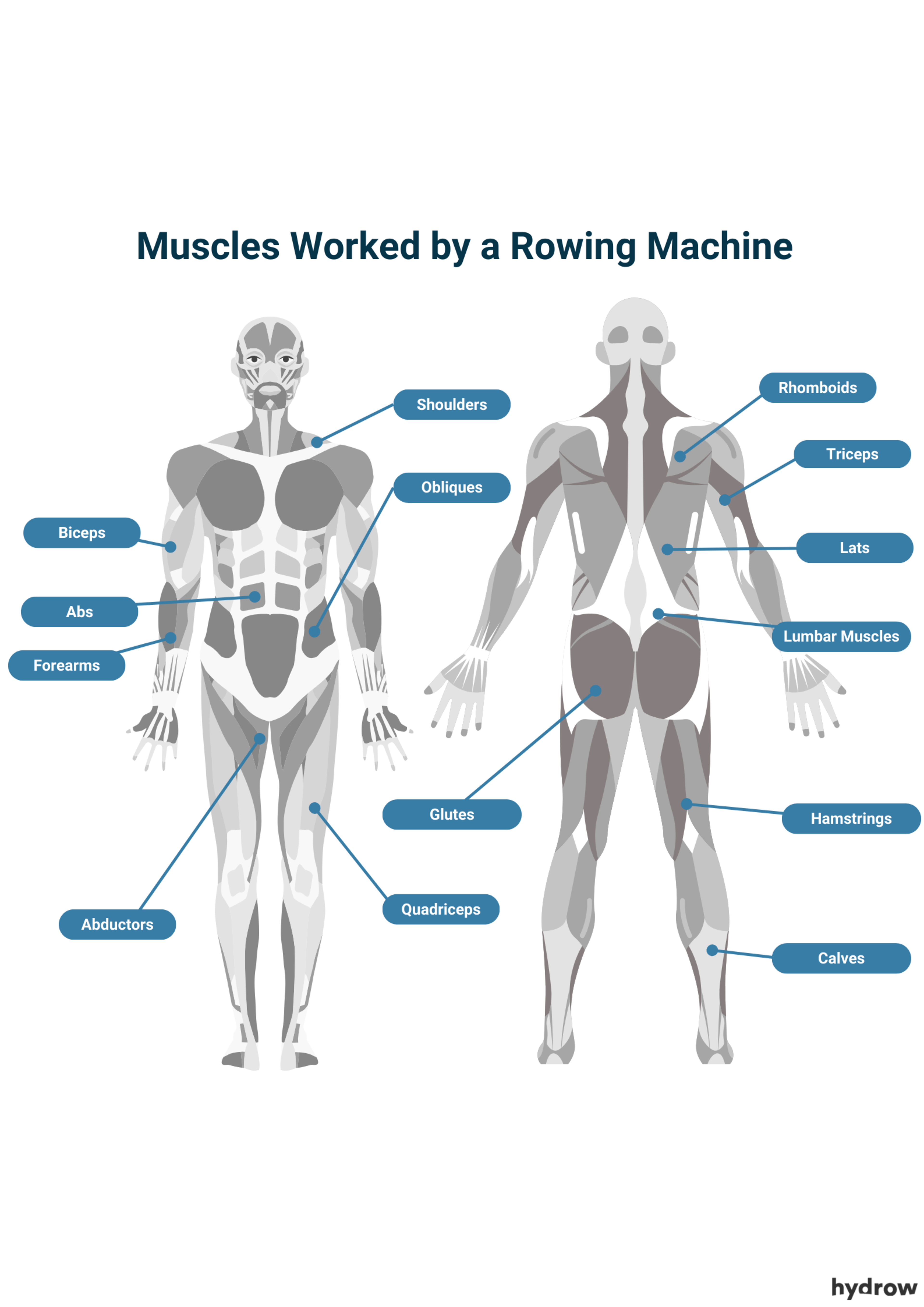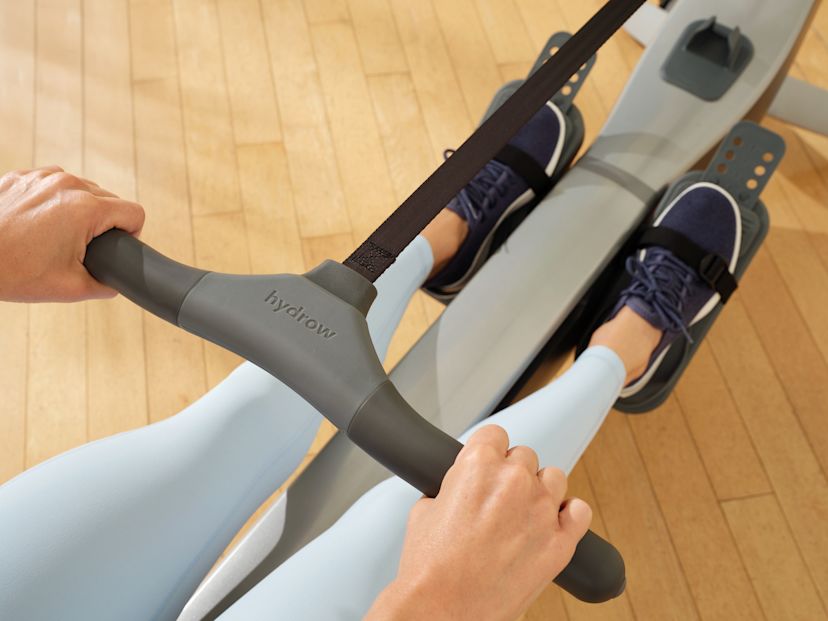What Muscles Does a Rowing Machine Work?
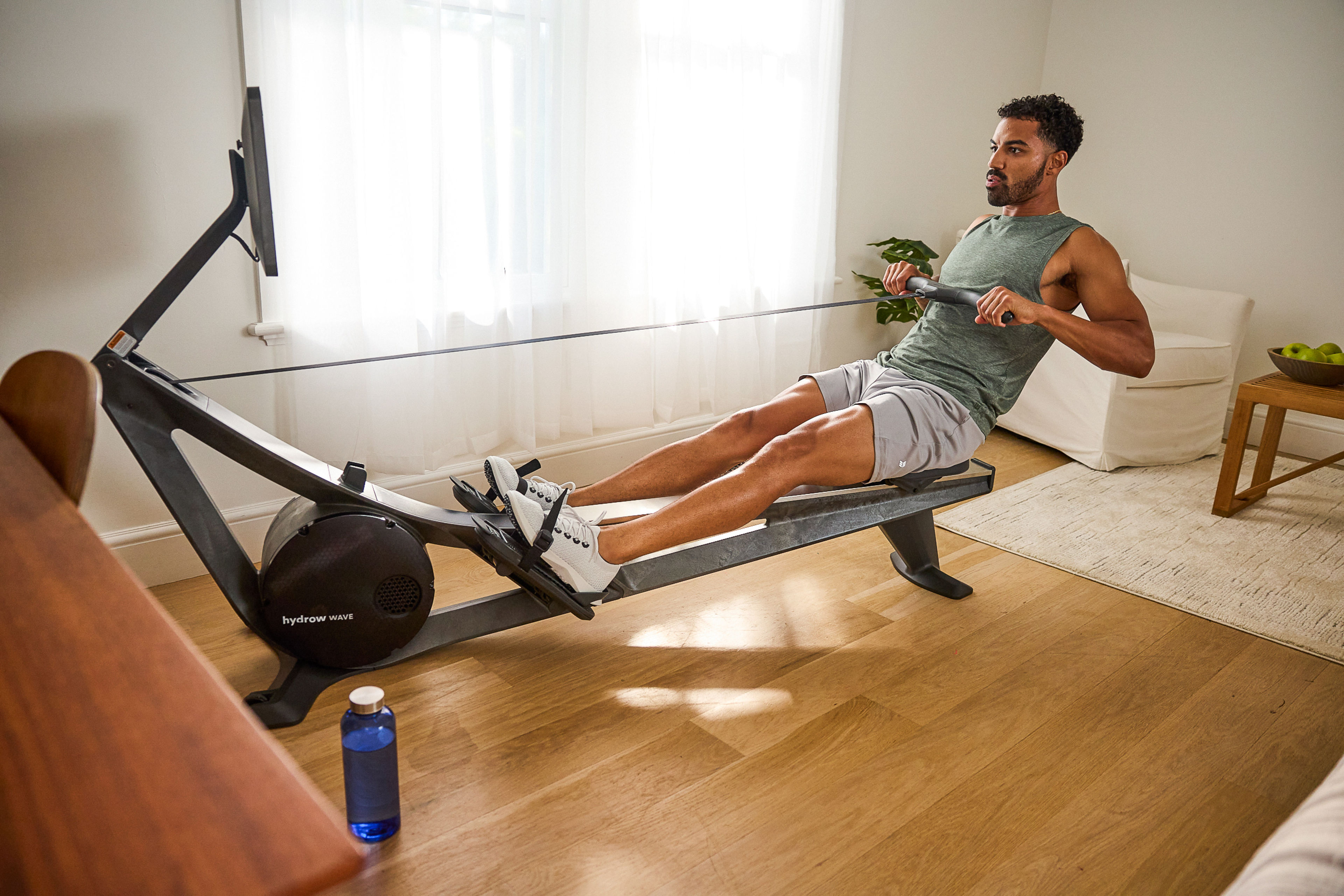
If you are new to rowing, you may assume it is primarily an upper-body workout. The motion of pulling the handle to the torso is the most noticeable, after all, making it appear that your arms are doing most of the work.
But in reality, working out on a rowing machine activates muscles throughout your entire body, with an impressive 86% of your major muscle groups targeted in a single rowing stroke.
If you are looking for a comprehensive (and efficient!) full-body workout, keep reading to learn more about:
Let's dig in!
Key takeaways:
A rowing machine engages an impressive 86% of your major muscle groups—calves, hamstrings, quads, glutes, core, lower back, shoulders, lats, biceps, triceps, and forearms—in each full stroke.
As you row, your lower body initiates the drive, your core stabilizes and transfers power, and your upper body finishes the pull, creating a seamless, full-body movement.
While rowing builds strength, endurance, and cardiovascular fitness, targeted muscle growth (like building glutes or abs) may still require additional exercises.
What muscles does rowing work?
Maximizing each of your rowing strokes requires the use of muscles across your entire body. In total, the key muscles a rowing machine works include:
Biceps
Lats
Rhomboids (upper back)
Shoulders
Forearms
Triceps
Glutes
Quadriceps
Calves
Hamstrings
Abdominals
Obliques
Lumbar muscles
Abductors
Below, we’ll explore how rowing works your upper body, lower body, and core muscles.
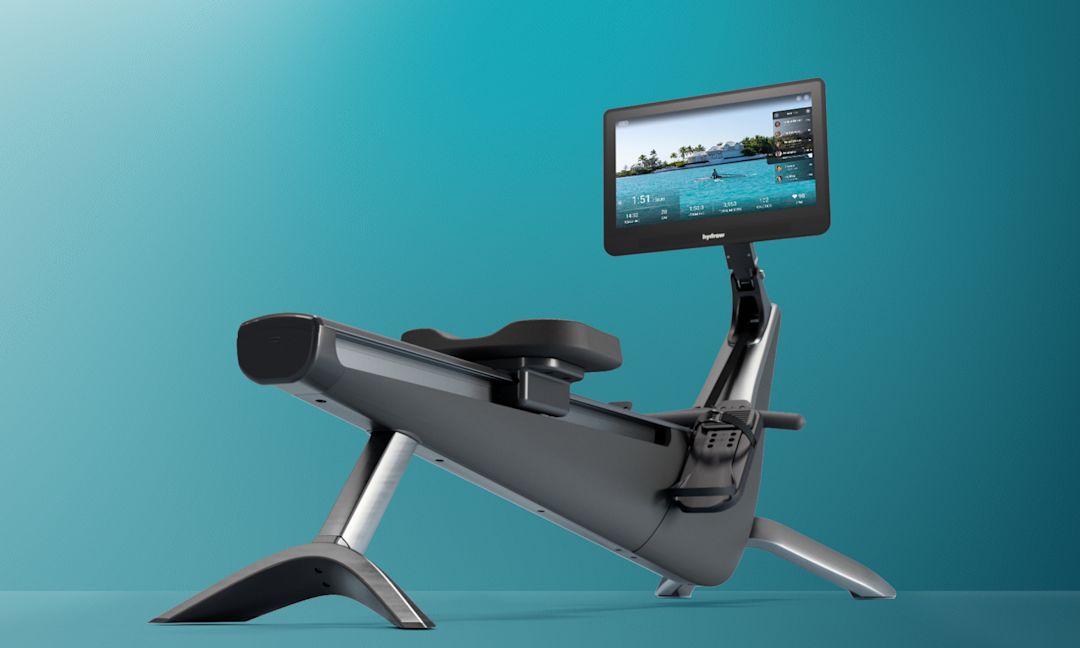
Holiday savings are here
Bring home our award-winning rowers at the best prices of the year.
Rowing machine muscles worked: Upper body
A rowing machine provides a comprehensive upper-body workout, engaging several major muscle groups, including:
Biceps: Your upper arms will be heavily engaged as you bring the rowing machine handle confidently and purposefully to your chest and away from your chest.
Lats: The lats—the delta or upside-down V-shaped muscles span across the majority of your back, below your armpits and running down the upper half of your back—help in pulling the handle toward the body during your rowing stroke and help support good postural positioning.
Rhomboids: These upper-back muscles are responsible for retracting your shoulder blades in the rowing stroke and help keep your upper-body organized with good technique and proper form.
Shoulders: Your deltoid muscles in your shoulders are involved in the initial pulling/connecting motion of the rowing stroke and help keep you stabilized throughout your stroke.
Forearms: Your forearm muscles help you grip your handle through the duration of your rowing stroke.
Triceps: The triceps are engaged in the recovery phase of your rowing stroke as your arms extend back out in front of you to return to your starting position. The triceps mainly help control the movement of your arms and stabilize your elbows as you transition between phases.
Rowing machine muscles worked: Core
Your core provides an essential connection between your arms and legs. With proper core engagement, you can help sustain power generated from your legs and maintain good technique and a powerful connection between your feet and the handle.
Let’s explore how rowing works your core muscles:
Abdominals: Your abdominal muscles act as stabilizers through the duration of your stroke. The abs transfer power from your legs through your core to your arms during the Drive phase and support your backward lean during the Finish phase to prevent excessive arching of the lower back.
Obliques: Your oblique muscles stabilize your torso, help transfer power from your lower body to your upper body, and keep your posture straight, strong, and stabilized.
Lumbar muscles: Otherwise known as your torso, these muscles are also key stabilizers throughout your rowing stroke.
Rowing machine muscles worked: Lower body
Your upper-body muscles aren’t the only ones getting a major workout as you row! Let’s dig into the lower-body muscles you are targeting throughout your rowing stroke:
Glutes: The glutes are the powerhouse that provide the push you need to drive your rower seat backwards.
Quadriceps: The four muscles that make up the front of the thigh serve as stabilizers and shock absorbers for your hips and knees. They are key to supporting the coordination of your glutes during the Drive phase.
Calves: These leg muscles provide support for the power application and support ankle mobility, strength, and function when moving your body forward to the Catch.
Hamstrings: These muscles work as partners to the glutes and support the powerful push and extension of the hips.
Four-part rowing stroke: What does the rowing machine work?
If you’re new to rowing, it’s important to remember that the rowing stroke is broken down into four sections:
The Catch
The Drive
The Finish
The Recovery
Each section of the rowing stroke has a particular impact on your muscles. As you row, keeping these muscles in mind as you intentionally work through each phase will help maximize your output.
The Catch: What does a rowing machine work?
As the first phase of a stroke, the Catch works your arms, lats, core, and glutes. Your arms are used as you extend forward to hold the handle in the starting position. Your legs are working as you hold your shins vertically in the Catch position, while your core muscles (including your back and latissimus dorsi muscles) help support your arm movements/extension.
In the Catch phase, you will work your:
Lats
Shoulders
Arms
Core
Glutes
Hips
The Drive: What does a rowing machine work?
As you’re pushing with your legs through your feet in the Drive phase, you’ll use your hamstrings, glutes, and quads. Your core is fully engaged as you hinge at the hip to bring your body upright. Here, you’ll work your entire back and abs to keep your body stabilized. Then, as you pull the handle to your chest, your biceps activate and your shoulder muscles contract.
In the Drive phase, you will work your:
Glutes
Hamstrings
Quads
Calves
Core
Back
Shoulders
Biceps
The Finish: What does a rowing machine work?
In the third phase of the rowing stroke, your core is engaged as you hinge further back at the hip. This hinge engages all five of the major muscles that make up your core, including the rectus abdominis, internal abdominal oblique, external abdominal oblique, and transverse abdominis. As you pull the handle in toward your body, you’ll use your biceps and shoulders.
In the Finish phase, you will work your:
Core
Shoulders
Quads
The Recovery: What does a rowing machine work?
As you start the Recovery phase, you’ll extend your arms back out toward the front of the rowing machine, activating your shoulders and triceps. You’ll hinge back forward, continuing to engage your core muscles, and draw your knees up as you pull yourself toward the front of the rowing machine. This motion works your hamstrings and calves as they contract while you bring yourself back to the starting position, and your quads serve as shock absorbers as you come back toward the screen.
The Recovery phase will work your:
Shoulders
Lats
Triceps
Upper back
Core
Glutes
Quads
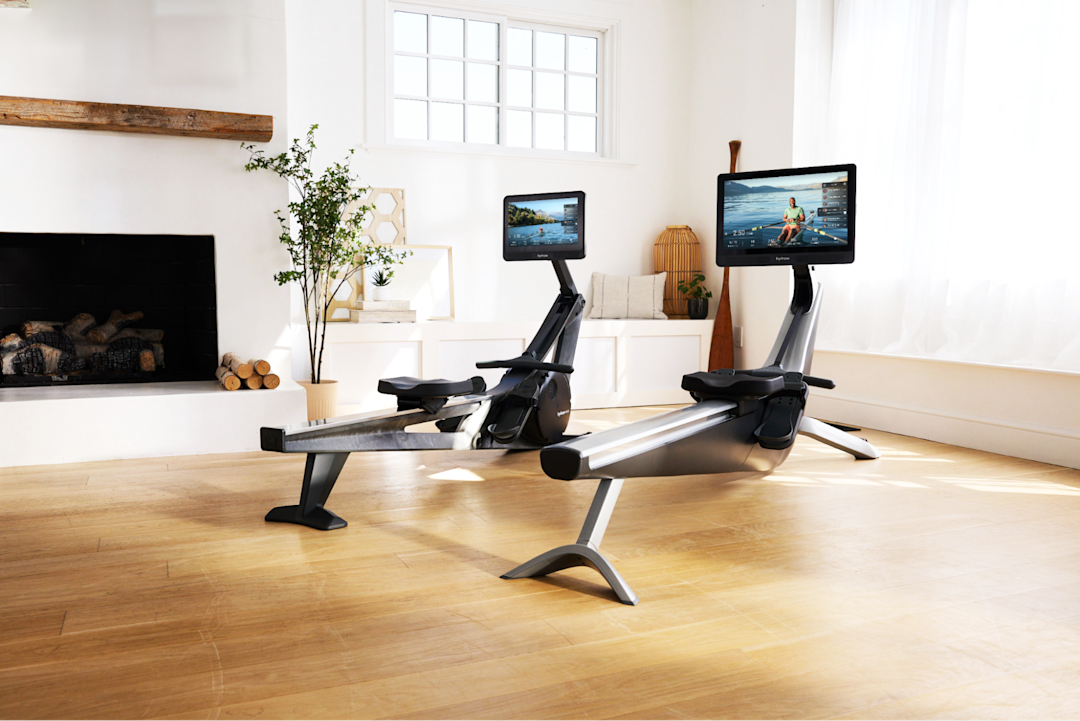
Wondering if a Hydrow rowing machine is right for you? Get answers in our FAQ guide.
Does a rowing machine build muscle?
One fantastic thing about rowing is that it’s both a cardio and strength workout, so you’re going to be able to build more strength than using other types of cardio workout equipment like a treadmill or elliptical. However, if muscle gain is your primary fitness goal, you’ll want to use rowing in conjunction with other strength training workouts to get the most out of each modality.
Because rowing machines offer a low-impact workout, they are great for cross-training, as you can easily incorporate them into your workout routine without worrying about putting too much strain on your muscles.
Learn More: Does a Rowing Machine Help You Gain Muscle?
What muscles do rowing machines work? Final thoughts
As you can see, rowing machines offer a comprehensive, full-body workout that engages a wide range of muscle groups, providing both strength and cardiovascular benefits. Contrary to the common misconception that rowing is primarily an upper-body exercise, the activity involves a coordinated effort from the legs, core, and upper body.
If you’re considering adding a rowing machine to your home, Hydrow brings more than just equipment—it brings total-body results and intelligent training.
Each stroke works 86% of your muscles, delivering an efficient, immersive workout—and with real-time feedback and personalized scores, Hydrow helps you help you row smarter, build strength, and stay motivated. Just 20 minutes a day is all it takes to move with purpose, boost energy, and see results that last.
Hydrow’s workouts are led by world-class and Olympic Athletes and filmed on real water in beautiful locations around the world. Whether you’re rowing or cross-training with yoga, Pilates, strength, mobility, or circuit workouts, you’ll find movement that motivates—and keeps you coming back.
Ready to train smarter? Explore what Hydrow can do for you.

Real strength keeps moving
Learn how working out with Hydrow can help support a fuller, more active life.

